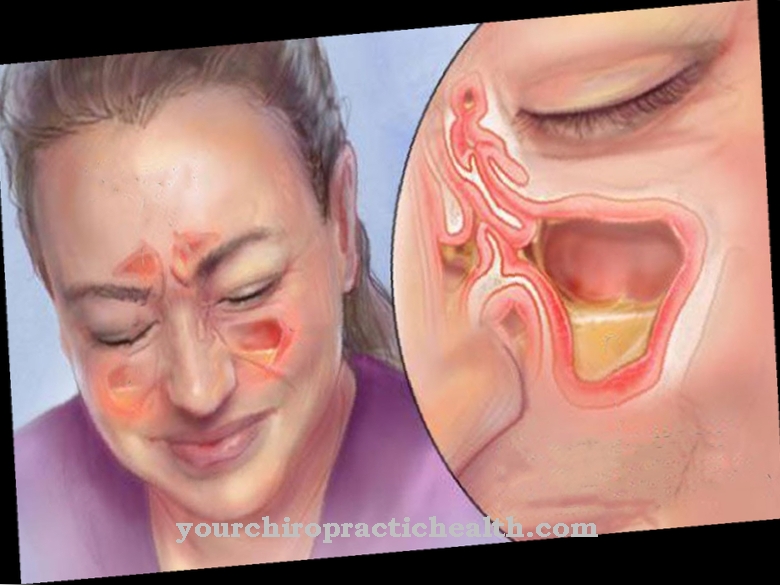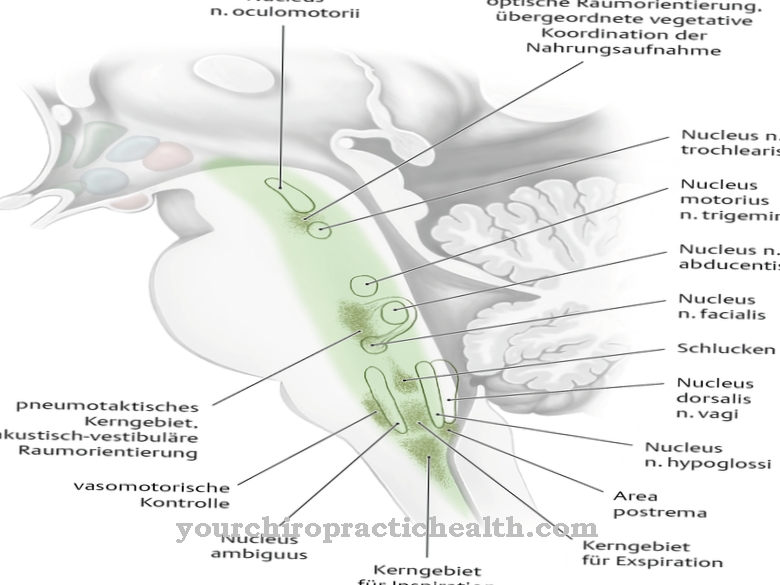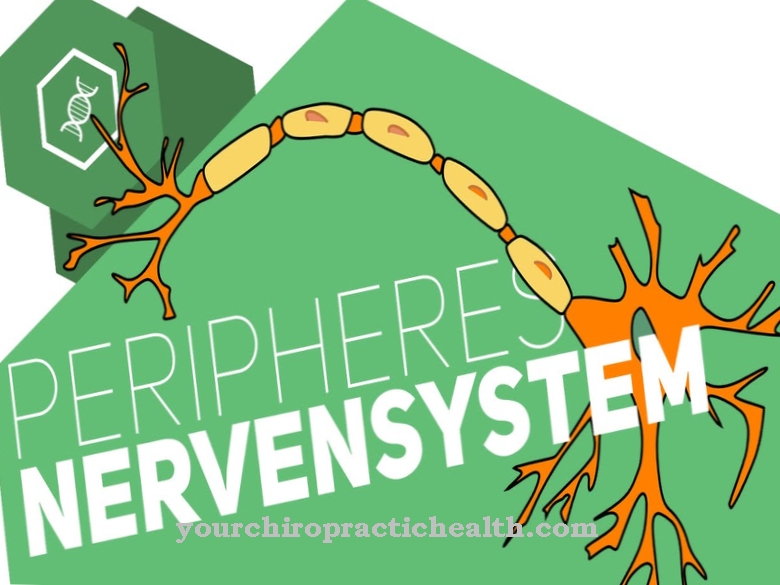The Formatio reticularis form a network of nerves in the human brain that consists of gray and white matter (substantia alba and substantia grisea) and runs through the entire brain stem. It extends to the spinal cord and consists of extensive, diffusely connected networks of neurons. The reticular formation controls u. a. Waking and sleeping states, the vital circulatory and breathing center, the vomiting center and large parts of the motor skills.
What is the reticular format?
The reticular formation is a network of diverse neurons that extend from the brain stem to the spinal cord. The Latin name Formatio reticularis is made up of the terms formatio (= design or education) and reticulum (= small network).
In German, the common name is sometimes also used Brain network used. The term reticular formation is also common. The neural network consists of white and gray matter (substantia alba and substantia grisea). The Formatio reticularis processes information from all motor and sensitive core areas of the brain. It is home to the circulatory and respiratory center and is involved in the control of sleep and wakefulness. Parts of the medical literature define the reticular formation negatively due to its strong interweaving.
According to this, it includes all fiber strands and neurons of the brain stem that do not clearly serve motor or sensory functions. The prerequisite, however, is that the fiber strands or neurons are located in the mesencephalon, rhombencephalon or myelencephalon (certain parts of the brain). The advantage of this negative definition is that the delimitation of the individual partial areas of the reticular formation, which is often difficult to implement, is no longer necessary.
Anatomy & structure
The reticular formation can be divided into three major core groups. It will therefore be between
- a median zone,
- a lateral zone and
- a laterally adjacent medial zone
distinguished. The median zone is made up of narrow cell plates, the so-called Raphne nuclei. This zone is used for information processing. Information from other areas of the brain (e.g. the limbic system or the frontal cortex) is also received and forwarded here. The lateral zone is mainly responsible for motor efferents. This zone is made up of small cells.
The laterally adjacent medial zone, on the other hand, consists of comparatively large cells. From here, information and substances are forwarded to the thalamus and partly also to the cortex (both are brain areas). In addition, information from the spinal cord, the cerebellum and sensory nerve nuclei of the brain arrive in the medial zone.
Function & tasks
The various zones of the reticular formation direct vital functions of the body. This is how vomiting and swallowing are controlled from here. The reticular formation is also involved in micturition. The term micturition describes the physical process of emptying the urinary bladder.
The peculiarity of the brain network is that it brings together motor sub-functions into a holistic line (forwarding and bundling function). Here information from almost all parts of the brain is brought together, processed and finally passed on. Much of the information is sent to the cerebellum, cerebrum and diencephalon. One therefore speaks of the brain network as a “bridge to the diencephalon”. The reticular formation is also used to control awareness and the differentiation between waking and sleeping.
Participation in pain control is also reported in the literature. The reticular formation is also involved in controlling the circulatory system (cardiovascular system) and influencing the respiratory center. Since the brain network connects the limbic system with the nuclei of the hypothalamus, it also plays a role in the coloring of sensory impressions. It is also involved in the formation and control of human emotions.
You can find your medication here
➔ Medication for shortness of breath and lung problemsDiseases
Post-traumatic stress disorder (PTSD or "posttraumatic stress disorder" PTSD) often occurs in connection with the reticular formation.
The illness arises from particularly traumatic events that are extremely difficult to process (e.g. wars, natural disasters, accidents or rape). The medical literature estimates that 2-7% of the world's people will experience PTSD once in a lifetime. The stress disorder limits the everyday life of those affected and can become chronic if insufficiently treated. Timely therapy is therefore essential. The stress disorder always follows a traumatic situation. However, it does not have to occur immediately afterwards.
PTSD can also lead to noticeable symptoms many years after the trauma. These are obtrusive, recurring memories of the traumatic event (so-called flashbacks). They can appear in the form of nightmares during sleep, but also during the day. Memory gaps are also possible. However, they are always characterized by great fear and a feeling of extreme helplessness. Those affected are therefore under massive tension. The connection between post-traumatic stress disorders and the formatio reticularis is justified in the literature by the fact that the stress disorders lead to permanent changes in the brain network.
Such changes can also be the cause of sleep disorders, because the reticular formation is essential for the initiation of sleep and the control of the waking and sleeping state. However, PTSD in particular has so far been treated exclusively psychologically or psychiatrically. Whether the therapy takes place in an inpatient or outpatient setting depends on the specific nature of the individual case. This also determines whether drug treatment is required or not.






.jpg)






.jpg)

.jpg)
.jpg)











.jpg)